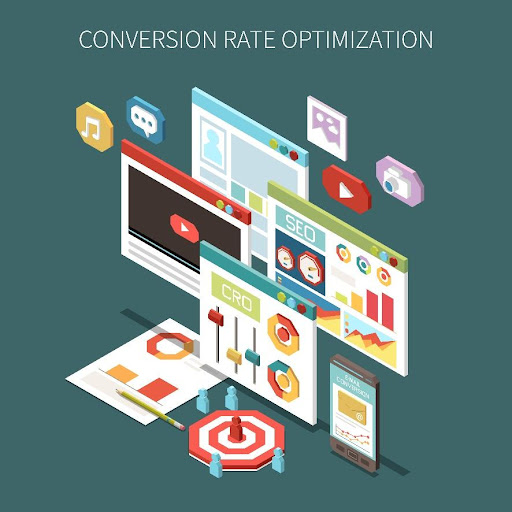Web analytics is the measurement, collection, analysis, and reporting of internet information to recognize and optimize internet usage. It allows marketers to gain insights into the behavior of their website visitors, track the performance of their marketing campaigns, and make data-driven decisions to improve their online marketing strategies.
There are many web analytics metrics available, but it is important to focus on the most relevant and meaningful ones. In this article, we will discuss the most important web analytics metrics that all marketers should be aware of to help improve their online marketing efforts.
15 Web Analytics Metrics Every Marketer Should Know
1. Unique visitors
Unique visitors, also known as unique users, are the number of unique individuals who have visited your website in a given period. This metric gives you a clear picture of the number of new visitors to your site and helps you define the scope of your marketing efforts.
2. Page views
Page views refer to the number of times a page on your site has been viewed. This is a key metric that gives a good indication of the popularity of your site and the content on it.
3. Bounce rate
The bounce rate is defined as the number of visitors who leave your site after viewing only one page. A high bounce rate may indicate that your site or landing page is not providing the information or content that visitors are looking for. On the other hand, a low bounce rate may indicate that your site is attractive and relevant to visitors.
4. Average time spent on site
The average time spent on your website is the average time visitors spend on your website over a given period. This metric shows how engaged visitors are with your site and its content. A high average time spent on a site indicates that visitors find your site valuable, while a low average time spent on a site may indicate that your site does not provide the information or content that visitors are looking for.
5. Conversion rate
Conversion rate is the percentage of visitors who perform a desired action on your website, such as making a purchase, filling in a form, or subscribing to a newsletter. It is a key metric that gives you a clear picture of how well your site is performing in terms of generating conversions. A high conversion rate indicates that your site is effective in converting visitors into buyers or leads, while a low conversion rate indicates that your site needs improvement in terms of design, content, or user experience.
6. Redirected traffic
Redirected traffic is the number of visitors who come to your website from external sources such as social media, search engines, or other websites. This metric helps you understand the sources of traffic to your site and the effectiveness of your marketing efforts across different channels.
7. Search engine traffic
Search engine traffic is the number of visitors to your site from search engines such as Google, Bing, or Yahoo. This metric gives a good picture of your site’s visibility in search engines and the effectiveness of your search engine optimization (SEO) efforts.
8. Social media traffic
Social media traffic is the number of visitors who come to your website from social media sites such as Facebook, Twitter, or Instagram. This metric gives you an indication of the impact your social media marketing efforts are having on your website traffic.
9. Mobile traffic
Mobile traffic is the number of visitors who access your website from a mobile device such as a smartphone or tablet. This metric gives you an idea of how many of your visitors are using mobile devices to access your website and how well your website is optimized for mobile devices.
10. Exit pages
Exit pages are the pages on your website from which visitors leave and do not continue browsing. This metric allows you to understand which pages on your site are causing visitors to leave, which can help you identify areas to improve content or user experience. By analyzing your exit pages, you can identify potential bottlenecks to your site’s conversion.
And make changes to improve visitor engagement and reduce the number of exits.
11. Returning visitors
Returning visitors are people who have visited your website before and are visiting it again. This metric measures the loyalty of your website visitors and the value they see in your website. A high return visitor rate may indicate that your site provides valuable content and a positive user experience, while a low return visitor rate may indicate the opposite.
12. Pages per session
Pages per session are the average number of pages a visitor views on your site in a single session. This metric shows how engaged visitors are with your site and its content. A high number of pages per session indicates that visitors are spending time exploring the site and its content, while a low number of pages per session may indicate that visitors are not finding what they are looking for or that the site is not providing enough content to keep them engaged.
13. New vs. returning visitors
New vs. returning visitors is a comparison of the number of new visitors to your website versus the number of returning visitors. This metric allows you to understand the balance between new and returning visitors and helps you determine the impact of your marketing activity on attracting new visitors to your website.
14. Conversion funnel analysis
Conversion funnel analysis is the process of tracking the steps a visitor takes on your website before converting. It involves analyzing the different stages of your website’s conversion process, such as the landing page, product page, checkout page, and confirmation page, and identifying areas for improvement. By understanding how visitors interact with your site and its conversion process, you can make changes to improve the user experience and increase the likelihood of conversions.
15. Customer Lifetime Value (CLV)
Customer lifetime value (CLV) is a projection of the total value that a customer will bring to your business over their lifetime. This metric tells you the value a customer represents to your business and helps you determine the most effective marketing strategies to attract and retain customers.
And now let’s look at some of the areas that play a key role in your website’s success in terms of web analytics.
Role of Web Analytics in Website Success
1. Conversion Rate Optimization (CRO)
Conversion rate optimization (CRO) is a critical aspect of any website and is essential for businesses that want to maximize the potential of their online presence. Here are some reasons why CRO is important for your website:
- Increased revenue: by optimizing your website’s conversion rate, you can increase the number of visitors, who take the preferred action, inclusive of creating a buy or filling out a form. This leads to an increase in revenue and profits for your business.
- Improved user experience. This includes fixing technical issues, streamlining the checkout process, and improving the overall design and functionality of the site.
- Increased engagement: if your site provides a positive user experience, visitors are more likely to spend more time on your site, engage with your content and return in the future. This helps build brand loyalty and a strong online reputation.
- Improved customer insight: by analyzing site traffic and user behavior, CROs can provide valuable insights into the preferences, needs, and motivations of their audience. This information can be used to inform future marketing strategies and improve the overall user experience on your website.
- Competitive advantage: by optimizing your website’s conversion rate, you can stay ahead of the competition and attract more visitors, customers, and revenue. This will help your business become a leader in your industry and differentiate itself from your competitors.
- Data-driven decisions: This leads to more accurate and effective marketing strategies and helps ensure that your website is always optimized for the best possible results.
In summary, conversion rate optimization is important for your website because it helps increase revenue, improve user experience, increase engagement, provide valuable customer insights, create a competitive advantage, and make data-driven decisions. By making CRO a priority, you can ensure that your website is always performing at its best and delivering the results your business needs to grow.
In addition to conversion rates, it’s also important to pay close attention to some web analytics tools, such as heatmap or session replay.
2. Heatmaps and Session Replay
Heatmaps and session replay are powerful tools for web analytics that can provide valuable insights into how visitors interact with your website.
- Heatmaps: heatmaps are visual representations of user behavior on a website, showing where visitors click and how they interact with your site. They provide a clear and intuitive picture of what is working well and what can be improved on your site. Heatmaps help you see which parts of your site attract the most attention and which are being ignored, so you can optimize your site to better meet your visitors’ needs.
- Session Replay: It includes all mouse movements, clicks, and scrolls and gives you a comprehensive picture of how visitors navigate your site and interact with its content. The session replay is particularly useful for identifying problems with the user experience of a website, such as confusing navigation or slow page load times.
Heatmaps and session playback can be used together to get a complete picture of user behavior on your website. By analyzing the data provided by heatmaps and session replay, you can identify areas for improvement and optimize your website to provide a better user experience.
In summary, heatmaps and session replay are important tools in the field of web analytics that can provide valuable insights into user behavior and help businesses optimize their websites to achieve the best possible results. Using these tools, businesses can gain a deeper understanding of their audience and improve their online presence to attract and retain more customers.
Summary
In summary, web analytics metrics provide a wealth of information that can help marketers improve their online marketing efforts. By focusing on the most relevant and meaningful metrics, marketers can gain insights into the behavior of their website visitors, track the performance of their marketing campaigns, and make data-driven decisions to optimize their strategies. By incorporating these metrics into your marketing strategy, you can improve the performance of your website and ultimately drive more conversions and revenue for your business.
PRmention is a digital PR agency for startups & SaaS businesses. Occasionally, we accept high quality contributed content and we’d love to hear any ideas you may have. Feel free to email us on guestcolumn@prmention.com if you are interested in contributing.



